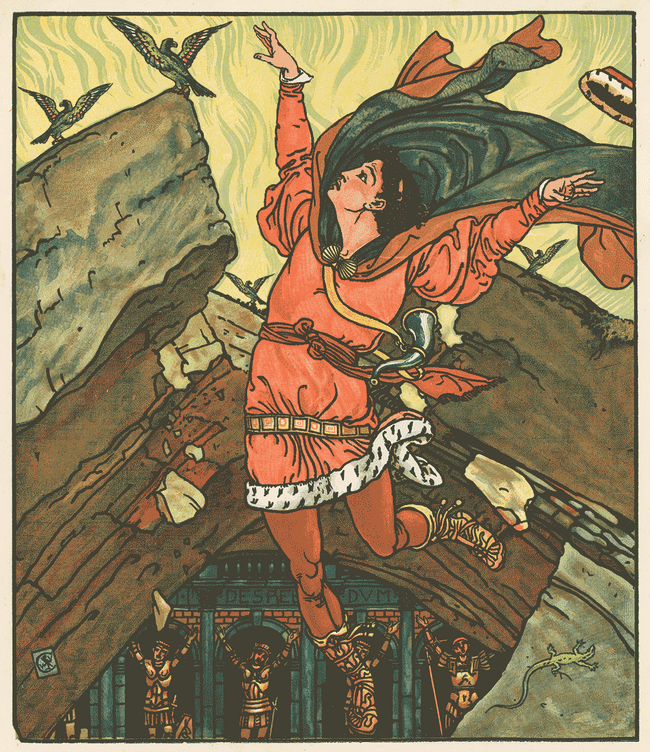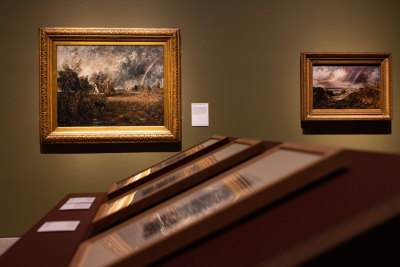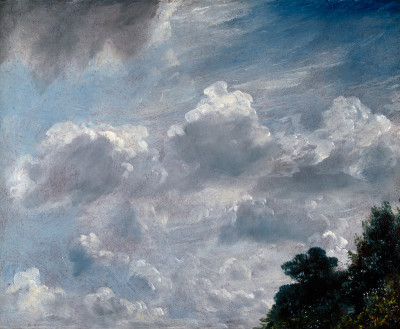The 12 days of gifmas
The 12 days of gifmas
By RA digital team
Published 25 December 2016
Merry Christmas, art-lovers! This morning we bring you some light entertainment from the RA Collection – which, it turns out, is chock-a-block with pipers piping, french hens and maids a-milking. We’ve made just a few festive alterations…
-
-
On the first day of Christmas my true love sent to me, a partridge in a pear tree…
It’s unfortunate that this one comes first in the song, as admittedly there is a distinct lack of partridge in the RA Collection. Thank goodness for the pear tree. For the first day of Christmas we have lovingly animated this beautiful oil painting, An Orchard in the Spring by Mark Fisher RA, the artists “diploma work” (the work each Royal Academician donates to the RA on being elected) given in 1920. We can only hope that the artist would appreciate our addition of some festive fowl.

-
-
-
On the second day of Christmas my true love sent to me, two turtle doves…
A happy surprise to us too: there are actually turtle doves in our collection. A young woman watching a pair of turtle doves was engraved by François de Poilly the younger, after a painting by the French artist Jacques-François Courtin. Turtle doves have historically been used as symbols of true and enduring love, due to the fact that they typically mate for life.

-
-
-
On the third day of Christmas my true love sent to me, three French hens…
First published in One Hundred Moral Fables in 1570, this woodcut is by Giovanni Mario Verizzotti, a 16th-century Italian priest, humanist and scholar – and close friend and secretary of Titian. It’s called The Hen and the Swallow; the other two hens have presumably just wandered off frame, and we have taken some artistic liberties switching the remaining hen’s nationality from Italian to French. De rien.

-
-
-
On the fourth day of Christmas my true love sent to me, four calling birds…
The ambigious fourth gift has, at various points in history, been replaced by “colly birds” (blackbirds) or canary birds, but it’s safe to say we’re talking about songbirds of some description. Here – adding just a few extra birds added to make up the numbers – we’ve used Walter Crane’s The Prince and the Little Green Bird illustration from the fairy tale Princess Belle-Etoile. Pleasingly, the prince also appears to be wearing some sort of Santa suit.

-
-
-
On the fifth day of Christmas my true love sent to me, five gold rings…
There is some dispute as to what this line – clearly the most enjoyable one to sing – means. While the obvious interpretation is jewellery, it’s been suggested that the reference is actually to the gold bands around a pheasant’s neck. Anyway, our gold rings are neither of those, but a much more creative interpretation of a chromatic wheel, employed to help art students understand the relationships between colours.

-
-
-
On the sixth day of Christmas my true love sent to me, six geese a-laying…
John Halphead Smith painted this as part of a series of 12 watercolours depicting geese and ducks for use in a book. Sadly, said ornithological book was never published, although Halphead Smith’s ambiguity about what he’d actually painted may not have helped – the title of this work is Probably an Ashy-headed Goose. Close enough for gifmas.

-
-
-
On the seventh day of Christmas my true love sent to me, seven swans a-swimming…
Since 1984, the American bank PNC has released an annual “Christmas Price Index”, calculating how much it would cost to send your true love all twelve gifts year-on-year. In 2016, it’s the swans that’ll set you back the most, taking up $13,125 (£10,642) of the $156,507.88 (£126,905) total cost. The index also notes that swans have been the most unpredictable cost in the song, with a $10,000 (£8,108) difference between their highest and lowest price tags. Alfred Parsons’s chalk study of swans certainly has nothing to do with any of this, but we trust he’d enjoy seeing his sketches come alive for gifmas, nonetheless.

-
-
-
On the eighth day of Christmas my true love sent to me, eight maids a-milking…
This pretty rural scene might be missing a few maids, but it is an accurate depiction of 19th-century Milking Time in the Meadows. Painted by Thomas Sidney Cooper RA, this work was also given as a “diploma work” upon the artist’s election to the Royal Academy.
Another theory about the song’s provenance holds that it was once used by children as a memory game, challenging players to sing their way through the song without forgetting lines or stumbling over the alliterative sections.

-
-
-
On the ninth day of Christmas my true love sent to me, nine ladies dancing…
As the later gifts become increasingly hard to purchase, it’s been suggested that the song celebrates a wedding at which the “true love” has arranged for, among other things, dancing, leaping and piping. To illustrate that first activity, we’ve animated Eadweard Muybridge’s pioneering motion photography series, bringing to life the images he described as “Dancing (fancy)”.

-
-
-
On the tenth day of Christmas my true love sent to me, ten lords a-leaping…
In the 1990s, it was suggested that the 12 Days of Christmas was written as a secretive way for children to memorise Catholic catechism, at a time when followers of their religion were being persecuted in England. In this interpretation, those ten leaping lords are the ten commandments. However, this has been disputed on several grounds; since Protestantism and Catholicism share a belief in ten commandments, four gospels and so on, these wouldn’t need to be taught in code. Just one lord leaps in this Venetian engraving, but you get the idea.

-
-
-
On the 11th day of Christmas my true love sent to me, 11 pipers piping…
For the penultimate Christmas gift, we’ve chosen Flemish painter Jacob Jordaens’s depiction of Pan playing the flute. Another Jordaens work, As the Old Sing, So Pipe the Young, gets slightly closer to the 11 pipers, employing three meanings of the word: the title refers to a proverb, warning that children follow the examples they are shown, while the painting illustrates this with a man teaching a boy to smoke a pipe while a bagpiper plays.

-
-
-
On the 12th day of Christmas my true love sent to me, 12 drummers drumming…
For the 12th day of gifmas, please welcome the revolutionary spirit of France, banging her drum in La Révolution from 1896. The 12 Days of Christmas is thought to be French in origin, so Val Prinsep’s work makes a fitting finale.

-
-
Merry Christmas from everyone at the Royal Academy















